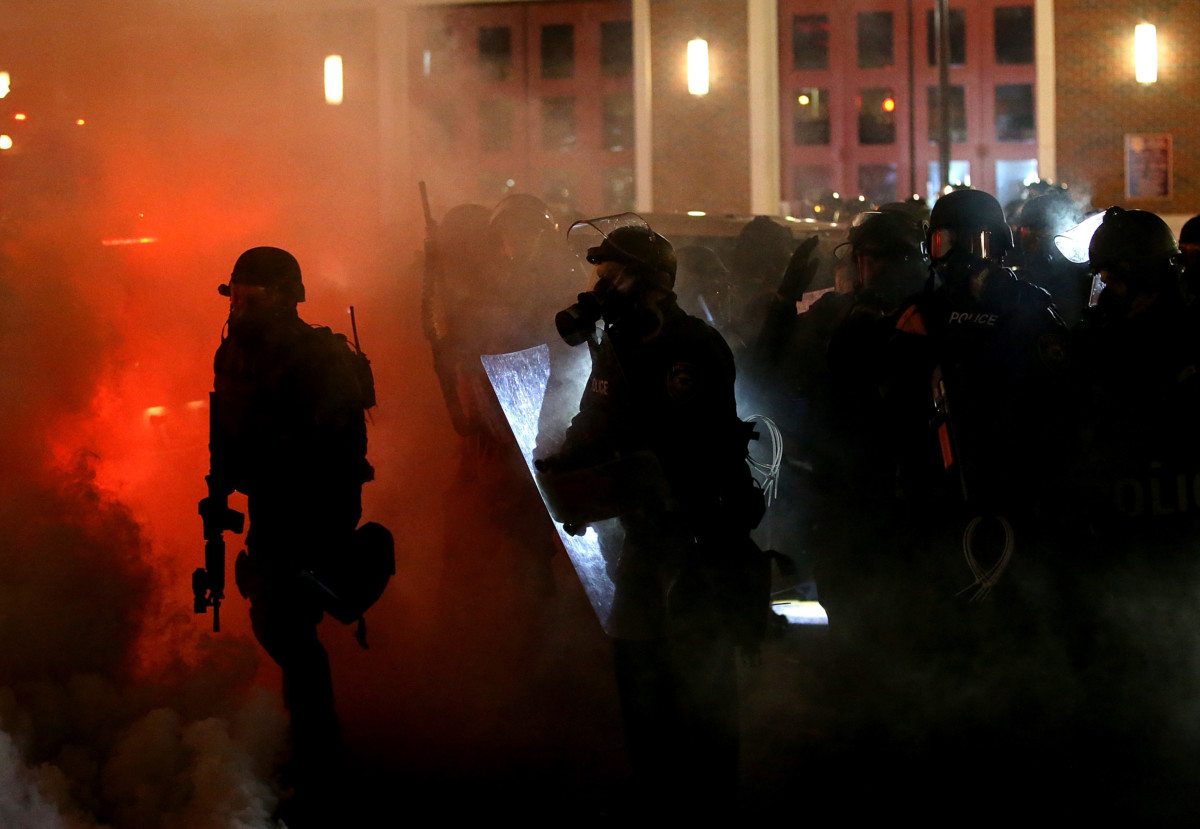Part of the Series
Progressive Picks
The use of tear gas to disperse protests has become all too common an occurrence. Anna Feigenbaum explores the history of tear gas, which started out as a military weapon before migrating over to police use. The following is a Truthout interview with Feigenbaum about her research.
Mark Karlin: How did you come to focus on tear gas as the subject of a book?
Anna Feigenbaum: While I’ve been packing handkerchiefs and lemons in my backpack to go to protests for over two decades, the idea to write a book about the history of tear gas actually came from the archives. Back in 2012, I was looking for photographs to use in my first co-authored book on the history of protest camps.
I kept coming across smoke-filled images. A newspaper clipping from the 1932 eviction of the Bonus Army protest encampment in Washington D.C. struck me. While I knew tear gas was heavily used in the 1960s, I had never questioned how old it really was, or where it came from. That night I stayed up for hours Googling “tear gas.” By morning, I’d sent a book proposal out to a handful of publishers. I became determined to answer a seemingly simple question: How did it become normal to police people with poison gas?

In what ways does tear gas cause harm to humans?
As the name suggests, tear gas is most often associated with making people’s eyes stream with tears. But tear gas actually effects many parts of the body, and can cause vomiting, digestive problems, respiratory problems, skin irritation and burns. In severe cases it can contribute to asphyxiation and heart attacks. It has also been linked to miscarriages and higher rates of cancer.
I became determined to answer a seemingly simple question: How did it become normal to police people with poison gas?
In addition, a major cause of injuries from tear gas comes from ammunition canisters striking people, particularly on the head. Since the earliest “peacetime” uses of tear gas, there has been a steady stream of reports of lost eyes, cranial damage and deaths due to direct hits from tear-gas canisters. Another way that tear-gas canisters or grenades cause harm is through their pyrotechnic devices or flammable components. For the tear-gas chemical compound to heat and disperse, other substances must be present. The use of these incendiary forms of tear gas has caused damaging and sometimes lethal fires in homes, vehicles and agricultural fields.
Of course, as with all weapons, there are different scales of violence used in deployments of tear gas. If I toss a tear gas grenade on the ground in front of a crowd where there are clear exit points (as protocol suggests), it is less likely that someone will die than if I lob that same grenade into a car or a prison cell or a subway station. Likewise, if I shoot you in the foot you are less likely to die than if I shoot you in the head. However, this does not mean that the bullet shot into your foot is a “humanitarian agent” and one shot into your head is a violent weapon.
What has been the military use of tear gas?
The first use of tear gases in war was during World War I. Trench warfare had caused a stalemate and new tactics were needed to get people out of trenches so that other forms of gas or artillery fire could be used on them. During the Vietnam War, tear gas was used to ‘smoke’ people out of the bunkers they were hiding in, again in order either hit them with a stronger form of gas, artillery fire or a bomb. These kinds of military uses are the reasons why these weapons are banned from warfare under the Chemical Weapons Convention. And yet, this convention contains an exemption clause that allows riot control agents to be used against civilians by law enforcement officers.
How did tear gas come to be used to disperse protests?
While troops were still returning home from the frontlines of World War I, active and retired military officers began lobbying to keep chemical weapons development afloat during peacetime. General Amos Fries, Chief of the Chemical Warfare Services through much of the 1920s, enlisted fellow WWI veterans, now working as lawyers and businessmen, to reach out to the press and help create a commercial market for war gases. They used newspaper and magazine articles to promote the benefits of tear gas for “isolating the individual from the mob spirit.” Learning from wartime experiences, they knew that tear gas could both demoralize and disperse a crowd, without firing live ammunition. The ephemerality of tear gas, they advertised, would prove better for police-public relations. Rather than leaving traces of blood and bruises, tear gas could evaporate from the scene. Taking these messages on the road, early tear gas salesman targeted factory owners and colonial administrators, traveling around with demonstration suitcases containing tear gas canisters and promises of a quick solution to social unrest.
Who profits from the use of tear gas?
The United States is the largest supplier of the world’s less lethal weapons, home to Combined Systems Inc, Safariland Group, and Sabre Red pepper sprays, among other major distributors. But the transnational trade in tear gas spans six continents. Rio-based Condor Nonlethal Technologies is the largest company of its kind in Latin America, exporting through international sales offices around the world. Rheinmetall Denel, a venture between Germany and South Africa, uses its military insights to bridge law enforcement markets. In France, SAE Alsetex and Verney Carron profit from sales both domestically and abroad. Operating from South Korea, C.N.O. Tech is one of several South Korean companies that sells less lethal weapons including tear gas and foam rounds. And Norinco in China is also growing on the scene, recently making headlines for its sales to the repressive regime in Venezuela.
What are some strategies that can be employed to try and stop the use of tear gas to halt protests?
From making DIY gas masks and eyewash-remedy infographics to filing lawsuits against the city for excessive use of force, there are myriad ways to resist the abusive use of tear gas against people protesting. Campaign actions can be targeted at the international policy level or around a local police department’s policies or trainings. Citizens can call for their governments to halt or embargo shipments, putting pressure on politicians to intervene when weapons are being sent to repressive regimes. In addition, arms expos, SWAT trainings and tactical conferences are all sites for intervention. As are the corporate manufacturing plants of riot control weaponry and the wealthy elites that profit off of protest.
Right now we are launching a Dump the Diamond campaign that calls on climbers and climbing gyms to boycott Black Diamond products. The executive chairman of the company’s holding group also runs the Safariland Group — one of the largest police equipment suppliers in the world, whose products are frequently used against peaceful protesters and disenfranchised people.
We also run a project called Riot ID that helps people identify, monitor and record the use of riot control agents against civilians. Making accurate identifications of less lethals can help people medically respond to the effects of exposure and injury, monitor human rights violations, challenge use of force abuses, and identify the manufacturer and country of origin of these devices. The project is a collaboration between researchers from Bournemouth University, Birmingham University and Omega Research Foundation, with Minute Works graphic design. We now also have infographics on the specific harms of tear gases and impact munitions. And this summer we are working on a board game version of these materials as part of the United Nation’s Education 4 Justice program.
Join us in defending the truth before it’s too late
The future of independent journalism is uncertain, and the consequences of losing it are too grave to ignore. To ensure Truthout remains safe, strong, and free, we need to raise $44,000 in the next 6 days. Every dollar raised goes directly toward the costs of producing news you can trust.
Please give what you can — because by supporting us with a tax-deductible donation, you’re not just preserving a source of news, you’re helping to safeguard what’s left of our democracy.
